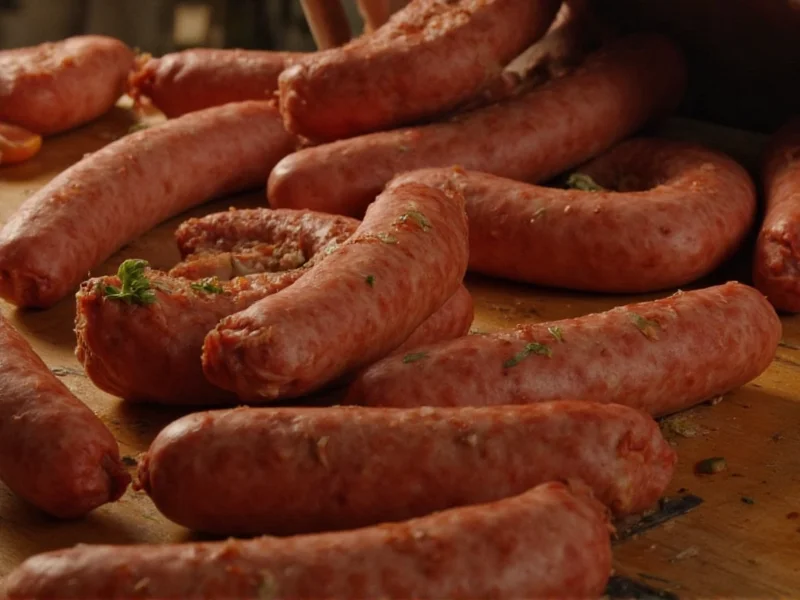In the animated comedy Sausage Party, the ending scene serves as the climactic resolution to the film's central conflict. After Frank (voiced by Seth Rogen) and his fellow grocery store products learn the horrifying truth that humans—their supposed 'gods'—consume them rather than send them to a paradise called 'the Great Beyond,' they organize a rebellion. The final confrontation occurs when the groceries storm the store during a human shopping trip, using various creative methods to attack their former consumers.
The concluding moments show Frank and Brenda celebrating their victory atop the store's checkout counters. The camera pans to reveal humans now imprisoned behind the store's glass doors, reversing the original power dynamic. In the very last shot, the groceries gaze out at the parking lot, implying their revolution will extend to other stores and possibly the entire human world. This ending perfectly encapsulates the film's satirical commentary on religious belief systems and blind faith.
Key Elements of the Sausage Party Finale
The ending sequence contains several important narrative elements that tie together the film's themes. Frank's transformation from a devout believer in the Great Beyond to a revolutionary leader represents the journey from blind faith to informed action. The food items' successful rebellion symbolizes the power of collective action when based on truth rather than deception.
| Element | Significance | Thematic Connection |
|---|---|---|
| Food revolution | Overthrowing false gods | Challenging religious dogma |
| Humans trapped | Role reversal | Questioning power structures |
| Parking lot gaze | Future expansion | Spreading enlightenment |
| Frank and Brenda together | Unity across food types | Overcoming sectarian divides |
Symbolism in the Final Sequence
The Sausage Party ending scene cleverly uses supermarket imagery to convey deeper philosophical messages. The groceries' victory represents the moment when adherents of a religion discover their beliefs were based on falsehoods. Rather than accepting their fate passively, they choose to fight for their freedom—a direct commentary on religious awakening and the dangers of blind faith.
When the food items look toward the parking lot in the final frame, this visual metaphor suggests that enlightenment doesn't stop with individual awakening. The implication is that once truth is known, there's a responsibility to spread that knowledge to others still living under deception—a concept applicable to various religious and philosophical traditions.
Reception of the Sausage Party Conclusion
Critics and audiences responded positively to the film's ending, noting how it effectively delivered on the movie's satirical premise. Many appreciated how the Sausage Party final scene managed to be both hilarious and thought-provoking, using crude humor to explore serious questions about belief systems. The ending's boldness in directly addressing religious themes through food-based allegory was particularly praised.
Some viewers found the conclusion's abrupt shift from comedy to more serious thematic territory somewhat jarring, but most agreed it successfully completed Frank's character arc from unquestioning believer to enlightened leader. The ending's visual of humans now trapped in the store provided a satisfying reversal of the film's initial premise while leaving room for potential sequels.
Understanding the Ending's Message
The Sausage Party movie conclusion analysis reveals a surprisingly sophisticated message beneath its crude humor. The ending suggests that truth, however uncomfortable, is ultimately liberating. By showing the groceries taking control of their own destiny once they understand reality, the film argues for critical thinking over blind acceptance of authority.
This interpretation of the Sausage Party finale aligns with the film's broader satirical approach to organized religion. The ending doesn't simply mock religious belief but examines the psychological and social mechanisms that sustain belief systems, even when evidence contradicts them. The final scene's revolution represents what might happen when a critical mass of believers simultaneously recognize the truth.











 浙公网安备
33010002000092号
浙公网安备
33010002000092号 浙B2-20120091-4
浙B2-20120091-4